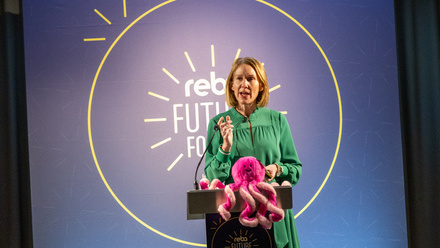How to prepare your global pay structures for a more transparent future
Whether driven by legislation, public expectation, or the shifting workplace values of a younger purpose-led generation, the tide is turning towards openness around pay and reward.
For global employers, the challenge right now is to anticipate and adapt, putting in place the kind of thinking and structures that can withstand scrutiny and harness transparency as a force for trust and engagement rather than a fear of risk and resistance.
Transparency as a global movement
Momentum around pay transparency is being shaped by two key forces: legislation and societal change.
From the US to Europe and beyond, regulations are multiplying. As of 2025, pay gap reporting requirements exist in 43 countries and 48 jurisdictions. Fourteen of the states in the US - a quarter of the workforce - already require employers to disclose pay ranges or total compensation in job adverts and questions around salary history are not allowed.
Across the EU, the Pay Transparency Directive ordains that by June 2026 member states need to implement national laws giving workers access to pay data, requiring companies to publish gender pay gaps, and compelling employers to justify gaps of more than 5%.
Even outside the EU, countries like the UK, Canada and Australia are strengthening their frameworks. For multinational organisations, this patchwork of regulation poses an operational and intellectual challenge, but it’s also an opportunity to set a global gold standard for fairness and accountability.
The power of expectation
The current wave of legislation coincides with a profound generational shift.
Younger, digital-native employees are becoming accustomed to sharing and accessing information on sites like Glassdoor, PayScale and Transparency Street. They will be less tolerant of the ‘old ways’ and are more likely to move on if they sense inequity or secrecy around reward.
This matters because it means transparency is no longer simply a compliance issue, but a something trust and cultures are being built on. Organisations that embrace it proactively are already seeing benefits in engagement, retention and even productivity.
Why global consistency matters
One of the biggest risks for multinationals is inconsistency. With every country implementing transparency rules differently (even within Europe, Sweden requires equal pay surveys for companies with 10+ employees, while France has set the bar at 50+) fragmentation can easily creep in.
Without a harmonised internal policy, businesses risk confusion, compliance gaps and reputational damage.
To stay ahead, leading organisations are developing pay transparency frameworks that can be played out on a global scale.
These frameworks lay down central principles that transcend local laws but allow for nuance, typically outlining how pay is structured, what criteria are needed to drive progression and how fairness is measured and communicated.
The goal is to create a coherent global narrative around pay, able to flex locally but remain rooted in clear, objective and equitable design.
Assessing transparency readiness
Preparing for a more transparent future starts with self-diagnosis and we are doing a lot of work helping HR leaders assess their organisations’ readiness to talk openly about pay, benefits and progression.
Key questions focus on what transparency means to an organisation, how robust and consistent their structures are, whether they can justify any pay gaps, and whether their leaders and managers can understand and explain how pay decisions are made.
We find organisations often fall into one of three readiness categories:
- Type A: Transitional: frameworks exist, but confidence or cultural readiness is lacking
- Type B: Structural: data and benchmarking are solid, but policies need clarity
- Type C: Strategic: little or no formal job architecture in place - full overhaul required
The common aim is to reach a point where they can talk confidently about pay and defend their decisions with data.
Building the right infrastructure
Transparency cannot exist without solid infrastructure, built on:
- Comprehensive data: organisations need to understand what pay and benefits data they hold - by gender, ethnicity, age, disability, and tenure - and identify any gaps.
- Robust job evaluation: comparable work lies at the heart of most legislative requirements. Employers need defensible job-levelling frameworks that ensure fairness across roles of equal value.
- Pay governance: decision-making on pay should follow objective, documented principles covering who can make pay decisions, how performance is assessed, and what evidence is used to support any differentiation from the norm.
- Education and communication: managers need to be trained to discuss pay openly and accurately while also handling the more sensitive side of pay decisions.
In the UK, Brexit may have delayed any immediate impact but a move towards greater transparency is inevitable, not optional.
Those who take the time to define their stance now will be best placed to thrive in a world where fairness, accountability and openness define what it means to be a good employer.
Supplied by REBA Associate Member, Innecto Reward Consulting
The UK’s largest independent pay and reward consultancy, transforming pay into performance.







